
Hidden Gems in Iran
When people think of traveling in Iran, their minds often go straight to the big names, the grand squares, ancient ruins, and famous mosques. But some of the country’s most fascinating spots are the ones that don’t get much attention. They might be a quiet corner inside a busy city, a small historic site that most walk past, or a place full of stories that rarely make it into guidebooks. These are Iran’s hidden gems, and in this article we’ll share 10 of them, each with its own charm and reason to stop, look closer, and be amazed.
Top 10 Must-Visit Hidden Gems in Iran
1. Hormuz Island
Hormuz Island is one of those places that surprises you the moment you step on its shores. Sitting in the Persian Gulf, it’s a small island with landscapes that feel almost otherworldly. The salt hills alone are worth the visit—bright, sparkling mounds of salt and jagged stones shaped by wind and water over centuries. Walking through the salt caves and along the sharp ridges, you can see how nature has carved this land into something completely unique. It’s a playground for anyone who loves exploring unusual landscapes or just wants to see something that feels untouched and magical.
But Hormuz isn’t just about rocks and salt. The island is full of life, from colorful birds to thriving marine creatures. Even small patches of plants create a rich ecosystem that supports the local wildlife, making it a peaceful escape for anyone who enjoys nature. There’s a calm rhythm here, where you can watch birds glide over the water, hear the waves, and feel like you’ve stumbled onto a secret world that most visitors miss entirely.
History is quietly woven into the island, too. From its ancient Greek name Organa to the Portuguese fort built in the 1500s, Hormuz has been a crossroads of culture and strategy. Today, it’s slowly opening up to travelers, offering a mix of history, local culture, and warm hospitality. Whether you’re wandering the streets, tasting the local food, or capturing the colorful landscapes with your camera, Hormuz Island has a charm that stays with you long after you leave.

2. Ali-ibn-hamzeh Shrine
Among the many wonders of Shiraz, the Ali Ibn Hamzeh Shrine stands as a jewel often missed by travelers. Built during the 19th century to honor Ali Ibn Hamzeh, nephew of Shah Cheragh, it carries with it a powerful story. After fleeing persecution under the Abbasid Caliph, Ali Ibn Hamzeh sought refuge near Shiraz, living in simplicity until he was discovered and executed. His final resting place later grew into a shrine, transforming sorrow into a lasting monument of faith and devotion.
From the moment you enter, the shrine reveals its magic. The entire interior shimmers with thousands of tiny mirrors, each catching light and scattering it in dazzling patterns that seem almost celestial. At night, this effect is magnified, creating an atmosphere that feels both sacred and dreamlike. A small fountain in the courtyard completes the picture, offering a sense of calm reflection before stepping back into the bustling city.
Located just a short walk from the Tomb of Hafez, it is easily accessible and open year-round. Spring and autumn bring the most pleasant weather for wandering through Shiraz’s gardens and monuments. Out of respect, women are asked to wear a chador provided at the entrance, and visitors are welcome to take photographs of the stunning mirror hall. Though modest in size, the Ali Ibn Hamzeh Shrine shines with unmatched charm, blending spirituality, history, and artistry into one unforgettable experience.
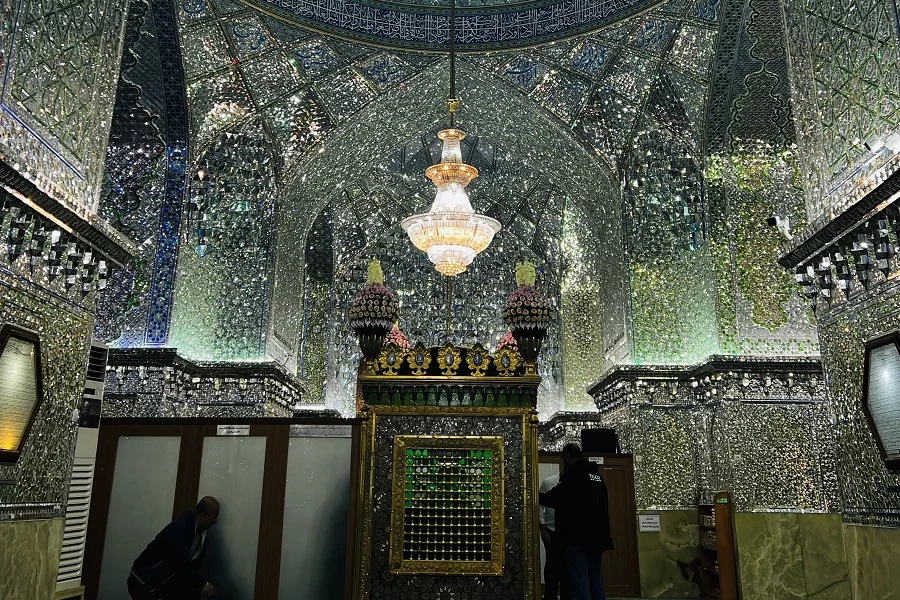
3. Alamut Valley
Alamut Valley, north of Qazvin and framed by the dramatic Alborz Mountains, is a place where history and legend merge. The name itself, meaning “eagle’s nest,” comes from an old tale of a ruler guided to this strategic site by a soaring bird. For centuries, the valley was at the heart of pivotal moments in Iranian history. Most famously, it became the stronghold of Hassan Sabbah and the Isma’ilis in the 11th century, serving as both a sanctuary and a center of resistance until the Mongol invasion brought its downfall. Even in ruin, Alamut Castle carries echoes of power, struggle, and enduring mystery.
Exploring the valley today feels like stepping into a storybook. The remains of Alamut and Lambsar Castles cling to rocky cliffs, their walls built to mirror the shape of the mountains themselves. Though time and treasure hunters have left their marks, the setting still commands awe—especially when you stand at the entrance, with sheer drops surrounding you on all sides. The landscapes add their own magic: quiet villages like Andaj with rivers winding through, and Ovan Lake, a shimmering body of water that shifts with the seasons, offering fishing, boating, and a stage for migrating birds in autumn.
What makes Alamut Valley so compelling is the way it blends history with nature. You can trace the footsteps of rulers, rebels, and philosophers, then turn and find yourself lost in views of rugged peaks and serene waters. It’s this harmony of stories and scenery that makes the valley one of Iran’s most extraordinary treasures, an open-air archive of the past, and at the same time, a playground for those who crave discovery.
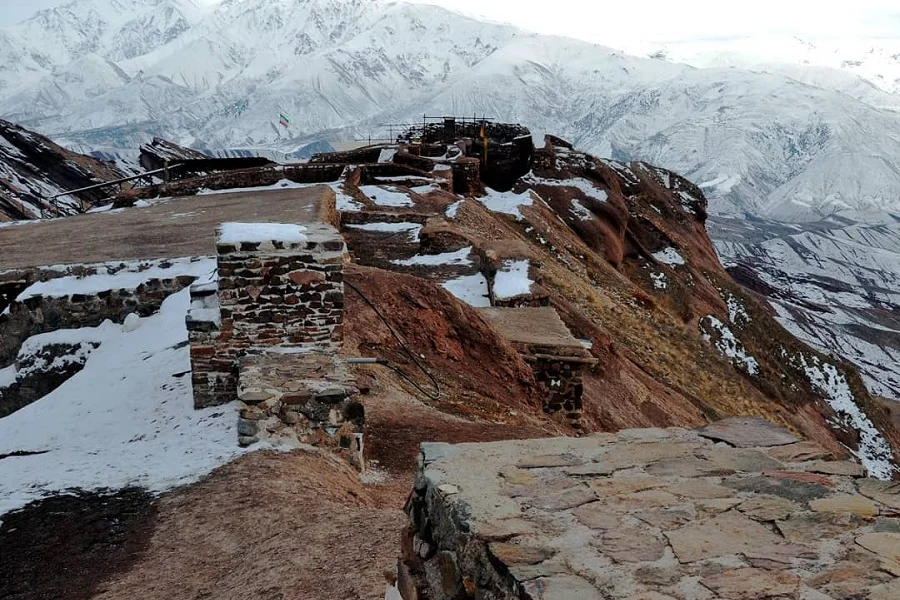
4. Meymand Rocky Village
Meymand, in Kerman province, is not just a village—it’s a living piece of history. Imagine walking into a place where people have carved their homes into the mountains for more than 12,000 years and are still living in them today. That’s Meymand, the “hand-carved village” that has earned a UNESCO World Heritage title and even an international award for preserving its cultural and natural heritage. What makes it special is that it’s not a museum frozen in time—it’s a real community where life still flows among caves, carved rooms, and ancient traditions.
The homes, called Kiches, are unlike anything you’ve seen. Instead of being built up, they were dug deep into the mountain, stacked in layers so that the roof of one house becomes the terrace of another. Step inside and you’ll see niches carved into the stone walls, used for dishes or bedding, and low doors that make you bend to enter. These rock homes are cool in the desert heat, warm in winter, and almost indestructible against fire, wind, and rain. With around 400 homes and thousands of rooms, Meymand is a masterclass in sustainable living—long before the word ever existed.
But Meymand isn’t just about its architecture. You can wander into a rock-carved mosque where light only enters through the doorway, explore a traditional bathhouse that still holds its domed design, or visit what was once a fire temple, now an ethnographic museum full of local crafts and stories. Even the caves nearby hide colorful rock paintings waiting to be discovered. Meymand feels both otherworldly and deeply human, a reminder that people have always found creative ways to live with the land—and in this case, inside it.
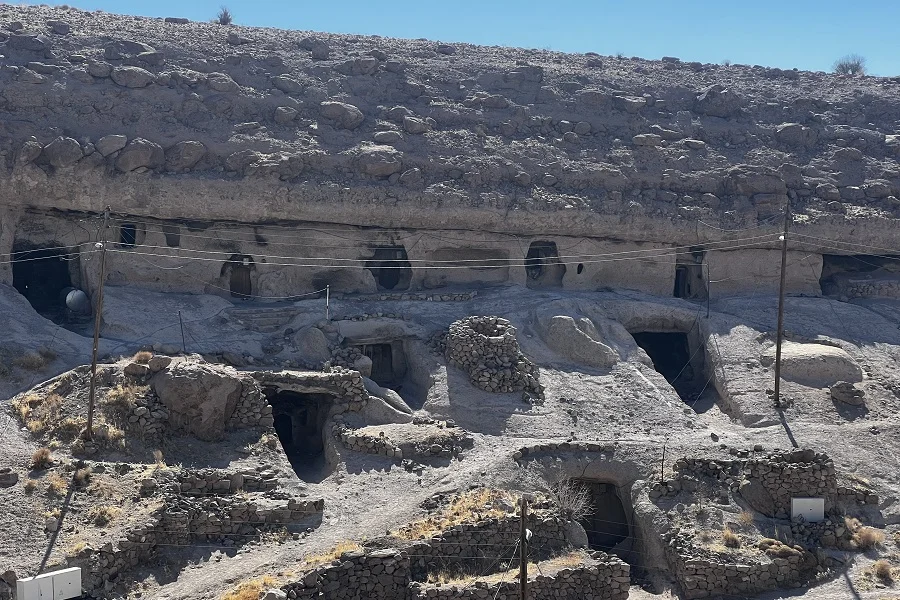
5. Saryazd Castel
At first glance, Saryazd Castle might look like a massive pile of ancient mudbrick walls in the desert near Yazd. But step closer and you’ll discover one of the most fascinating fortresses in Iran, part castle, part safe, part sanctuary. For centuries, this three-story adobe structure was where villagers rushed during invasions, carrying sacks of grain, gold coins, and family treasures to hide inside nearly 500 secure chambers. Imagine a whole community depending on one fortress to guard both their lives and their livelihoods.
The design of Saryazd is as clever as it is imposing. A deep moat once circled the outer wall, and the only way in was across a wooden bridge that could be pulled up in danger. Inside, two layers of walls and nine tall towers made it a nightmare for intruders. The castle’s interior is a winding maze, with narrow tunnels, sudden turns, and doors so discreet that enemies could easily get lost or trapped. Families would huddle in their assigned rooms, which, although never meant for permanent living, were fitted with little details like fireplaces and niches—practical touches for days of refuge.
Today, exploring Saryazd feels like stepping into a story of resilience. The symmetry of its towers, the play of light in its corridors, and the sheer scale of the mudbrick construction make it more than a relic of war—it’s a masterpiece of communal survival. Few places capture the blend of necessity and artistry as powerfully as this desert fortress, reminding us that architecture in Iran was never only about beauty, but also about protecting what mattered most.

6. Azadegan Tea House
Right next to Isfahan’s iconic Royal Square, Azadegan Tea House and Restaurant offers a perfect pause between sightseeing adventures. Whether you’re exploring the historic mosques, wandering through the bazaars, or admiring the architecture around the square, this charming spot is ideal for a break. You can enjoy a hearty breakfast, a full meal, or simply sip a steaming cup of tea while soaking in the cozy, museum-like atmosphere of the tea house.
Azadegan is not just about food—it’s an experience. Traditional décor, wooden furniture, and artifacts displayed around the space make it feel like stepping into a living museum. Visitors can also enjoy Shisha in a relaxed setting, perfect for unwinding after hours of walking around the square. The friendly staff are happy to guide you through the menu, whether you’re in the mood for local flavors or a quick snack.
Its location makes it incredibly convenient: you can pop in between visits to the Imam Mosque, Sheikh Lotfollah Mosque, or Ali Qapu Palace. A few minutes’ rest at Azadegan Tea House will recharge you for the next round of exploring, while giving a taste of authentic Iranian hospitality. It’s a spot where tradition, flavor, and comfort come together, making it a must-stop for anyone visiting Isfahan’s heart.

7. Mesr Desert in Iran
Few places in Iran capture the magic of the desert quite like Mesr. A small village in Isfahan province, it rises like a green jewel from the endless sands of Dashte-Kavir. Founded nearly a century ago by a resourceful shepherd named Youssef, Mesr became more than a settlement—it became an oasis where date palms sway over fertile gardens, fed by wells dug deep into the desert floor. Life here thrives against the odds, offering travelers a glimpse of how communities can flourish in the harshest of landscapes.
Exploring the Mesr Desert is a journey of contrasts. By day, golden dunes stretch as far as the eye can see, inviting camel rides, desert treks, and quiet moments watching sunlight ripple across the sand. By night, the desert unveils a sky so full of stars it feels almost within reach. The stillness is profound, broken only by the whisper of wind or the crackle of a campfire. Wildlife such as desert foxes, sand cats, and hawks adds life to the vast expanse, reminding visitors that the desert is full of hidden surprises.
Mesr Desert leaves a lasting impression because it is more than a scenic spot; it’s an experience of resilience, solitude, and wonder. Here, the past and present meet in the rhythm of daily life, the patterns of the dunes, and the sparkle of the night sky. For anyone seeking a desert adventure that balances excitement with serenity, Mesr offers a rare, unforgettable escape that lingers in memory long after the journey ends.
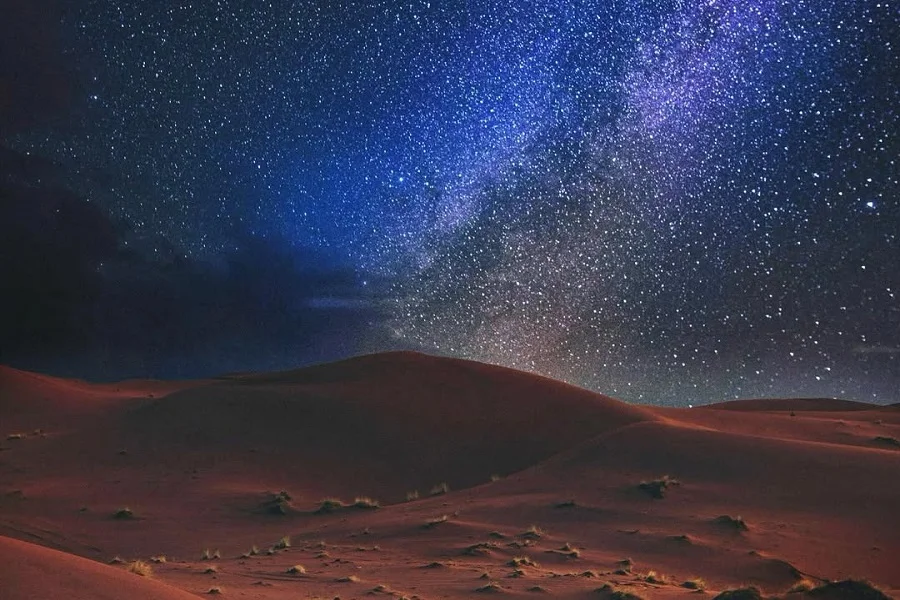
8. Kushkno Watermill in Yazd
Hidden beneath the historic streets of Yazd, Kushk-e-No Water Mill is a remarkable testament to Iranian ingenuity in the heart of the desert. Built along a qanat system that channels water from distant sources, this underground mill harnessed the natural power of flowing water to crush wheat and grains—a clever solution that allowed life to flourish in an arid city. Its underground headrace is the deepest in Iran, reflecting the skill and vision of ancient engineers who mastered water management centuries before modern technology.
Visiting Kushk-e-No gives a rare glimpse into the daily lives of desert communities. While most of the mill is now dry, small pools of water remain, and walking through its stone channels and chambers, you can almost hear the echoes of the grinding wheels that once turned tirelessly. The mill illustrates not just a method of producing flour, but also the resourcefulness and resilience that allowed Yazd’s residents to survive and thrive in one of the harshest climates in the world.
For travelers exploring Yazd’s old town, a UNESCO World Heritage site, Kushk-e-No is an ideal stop. It pairs perfectly with a stroll through the city’s narrow alleys, historic houses, and traditional bazaars, offering both a fascinating lesson in desert engineering and a moment to reflect on the timeless human connection to water. This small but extraordinary site reminds visitors that sometimes the most impressive marvels are found beneath the surface.
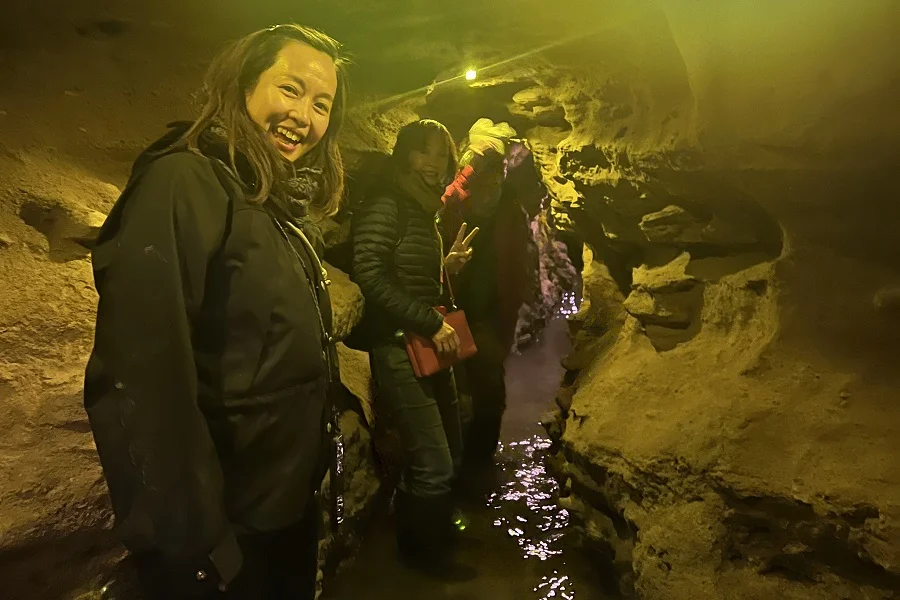
9. Nush Abad Underground City
Just outside Kashan lies an extraordinary testament to human ingenuity: the Noushabad Underground City, locally called Ouyi. Carved into the desert centuries ago, this underground settlement was built during the Sassanian era, around 1,500 years ago, as a clever solution to harsh desert conditions and repeated invasions.
Spread across three levels, Noushabad was designed for daily life and survival. The upper layer served as living quarters, the middle stored food and supplies, and the lower level offered communal spaces. Narrow tunnels, hidden stairways, and small passageways linked each level, creating a labyrinth that was both practical and defensive. Ingenious ventilation shafts kept fresh air flowing, while subterranean wells provided a reliable water source even in the desert heat.
Defense played a central role in the city’s design. Entrances were intentionally narrow, forcing invaders to enter single-file, while U-shaped tunnels, stone traps, and hidden chambers allowed residents to control access and fend off attackers. The clever layout saved countless lives over centuries, shielding families from Mongol and other raids.
Exploring Noushabad today is like stepping into a hidden world. Visitors can walk through arched chambers, winding tunnels, and stairways carved from soft limestone, discovering remnants of ancient lamps, storage spaces, and defensive features. Each corner showcases the skill and resourcefulness of its builders, offering insight into life beneath the desert surface.
The city was rediscovered accidentally in the 1960s, leading to careful archaeological studies that revealed its complexity and historical significance. Now, guided tours allow travelers to safely navigate the tunnels, providing a firsthand experience of this subterranean marvel.
A visit to Noushabad isn’t just a stop on a travel itinerary—it’s an exploration of human creativity, strategic thinking, and adaptation to extreme environments. For history enthusiasts, architecture lovers, and curious travelers alike, this underground city offers a unique opportunity to witness Iran’s ancient ingenuity in a tangible, unforgettable way.
10. Niasar Village & Rose ceremony
Every spring, the village of Niasar near Kashan transforms into a fragrant wonderland as the rose harvest begins. For more than 2,500 years, locals have been producing rosewater here, a tradition that continues to this day. Niasar, alongside nearby Qamsar, is one of Iran’s most celebrated centers for rosewater production.
The Rosewater Festival, held in April, is a vibrant celebration of this ancient craft. Visitors can witness the entire process, from the early morning harvest to the distillation of rosewater and essential oils. Picking begins before sunrise to preserve the delicate aroma of the petals, a ritual that has remained largely unchanged for millennia.
The harvested roses are placed in copper pots with water and heated in traditional ovens made of brick, stone, and mud. As the mixture boils, rosewater steam rises, carrying essential oils that condense through pipes into special containers. About 30 kilograms of flowers yield around 40 liters of rosewater after four hours of careful distillation—a process that is as mesmerizing as it is aromatic.
The festival itself is a sensory delight. Streets are filled with the bright colors of roses, the rhythm of traditional dances, and the melodies of local music. Visitors can meet the families who maintain their own small distillation setups, learning firsthand the secrets of this treasured craft. Locals take immense pride in their production—not only is Niasar rosewater exported around the world, it is also used annually to wash the Kaaba in Mecca, a testament to its sacred and cultural significance.
Attending the Niasar Rosewater Festival is more than just a visit—it’s an immersive experience. Travelers can smell the freshly distilled rosewater, participate in the cheerful celebrations, and gain a deeper appreciation for one of Iran’s most fragrant and enduring traditions. For anyone exploring Kashan in spring, the rose festival is a must-see, offering an unforgettable blend of history, culture, and natural beauty.

Last Words
Iran is full of surprises, ancient villages, magical deserts, hidden fortresses, fragrant rose fields, and clever underground cities. Every place has its own story, waiting for you to explore, enjoy, and experience something unforgettable.
No matter where you want to go, how you want to travel, or what questions you have, Tours of Iran is here to help. Don’t hesitate to reach out—we’ll guide you, plan your journey, and make sure your adventure in Iran is safe, easy, and full of memories you’ll treasure forever. Your next amazing story starts here!

